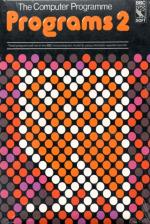
A&B Computing
 1st May 1983
1st May 1983
Categories: Review: Software
Author: A. Gollner
Publisher: BBCSoft/BBC Publications
Machine: BBC Model B
Published in A&B Computing 1.01
Check out whether the BBC's own software comes up to scratch in our complete software review
Globe
A program which displays a globe. It then shades it and prints lines of longitu1de and latitude, using a colour-switching technique to create movement by making the longitude lines run around the globe. I think that we could, perhaps, have done with a more addictive program at the beginning of the pack!
Water & Pond
These are a pair of programs which were written to answer a particular problem stated on the BBC Computer Programme, but they show how the computer can answer questions in different ways. The question is ‘Imagine we have an ornamental fish pond, in which swims a golden carp. It contains 500 gallons of water, but there’s a leak and after each hour we lose 1/500th of the water in the pond. The carp will be in danger when there is less than 100 gallons left in the pond, so how long do we have to leave it before the carp is in danger?’ Who knows? The computer does...
Water
This tackles the above problem by drawing a clear graph with a grid. In this way it is easy to find the right answer. The program illustrates how the computer can repeatedly do mathematical operations at considerable speed that would be too boring or difficult for us.
Pond
Solves the problem in a more interesting, if less accurate way. A cross-section of the pond is displayed showing the leak in the pond, a fish, reeds and a clock. When the water level reaches the 100 gallon mark on the side of the pond, the clock stops.
Paraser
A strange title for an interesting program. It displays the basics of how the computer communicates with the outside world. It shows how a parallel interface works by printing vertical text through a set of parallel ‘wires’. The same text is then printed through a single ‘wire’. It shows how the speed of one compares with the economy of the other. This program could do with some sound, but the graphics are quite clear and achieve the aims set for the program.
Lunar Lander
This is not only a game, but an example of computer simulation. A topnotch version of the old favourite. The program includes all the variables to do with the landing of a moon craft, as it gets closer to the moon’s surface. As the gravity increases, the mass is reduced because the fuel is used up. Your controls are three rockets — up, left and right. However, this program differs from the usual versions of ‘Lunar Lander’ in that as soon as a rocket is turned off, the speed still increases and the opposite rocket has to be activated to counteract your increasing speed. When the thrust is zero in both directions, the speed of the craft does not increase although it still moves from its momentum and the opposite rocket has to be re-activated to slow the ship down. A difficult but challenging game, which I must admit that I have failed to master as yet. The sound effects accompanying your moves are spot-on.
LED
This is an example of how the BBC Micro can be used in education to present ideas in a clear graphic way; in this case, a design showing the circuit diagram of an LED (as used, for example, on calculator displays). As consecutive keys are pressed, a part of the LED is lit as well as the wires that carry the electricity to light up the LED. After all seven segments are lit, the program lights up the LEDs in the shape of the number-key you are pressing. Again there is no sound but the graphics are very good.
Quiz
The BBC Micro in education — a program to show how the computer can teach by asking questions with graphic display to keep the pupils interested. This program draws a single map of Britain and asks four questions about cities in Britain by marking the city chosen by a red spot indicating the position of the city. There is a great deal of room to put in your own questions and it is quite simple to change the display, but I would have liked to have seen some questions put in to begin with.
Noughts And Crosses
Sounds like a pretty simple program, but it has no strategy like its human opponents. As the games progress, it notes your strategy for later use and after about 50 games it becomes hard to beat. The board is very clear and the scores on the side are good — with clear numbers and percentages so you can see the computer’s progression as it learns to beat you.
The Computer Programme Programs Volume 2 is a good buy for Model B owners who want a ‘Welcome Pack’ that has programs especially for their machines using all the advantages of the expanded memory. Though these programs lack sound (except for the Lunar Lander), they are a good set of eight programs and well worth £10.
Other BBC Model B Game Reviews By A. Gollner
Scores
BBC Model B Version| Clarity | 50% |
| Sound | 15% |
| Graphics | 60% |
| Documentation | 60% |
| Value For Money | 55% |
| Overall | 65% |









